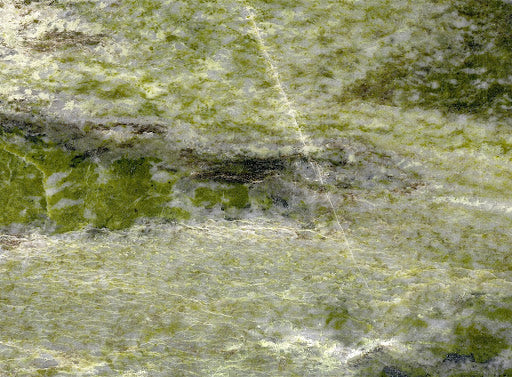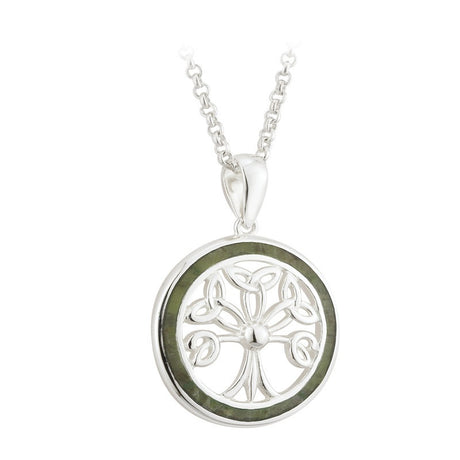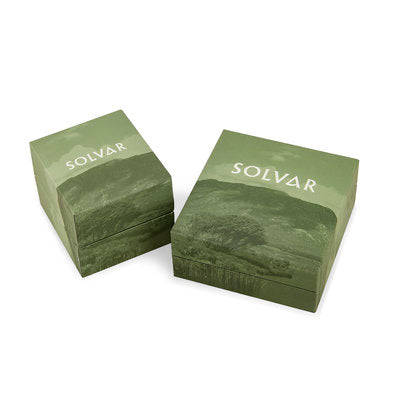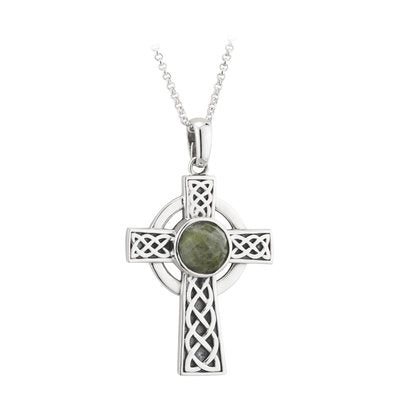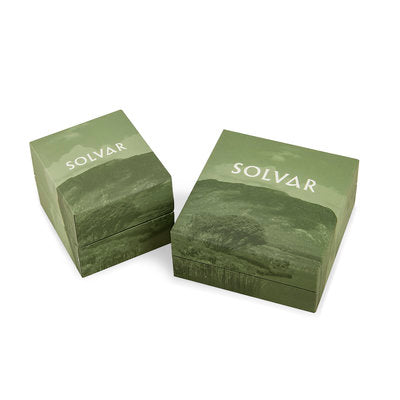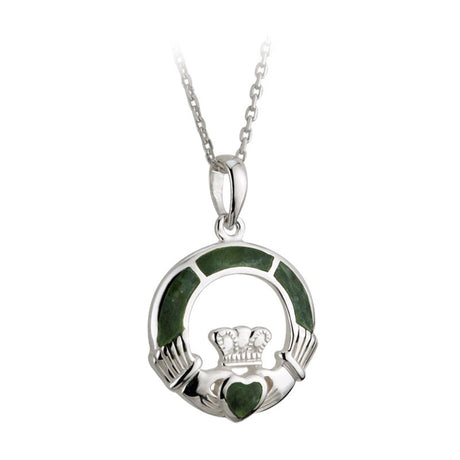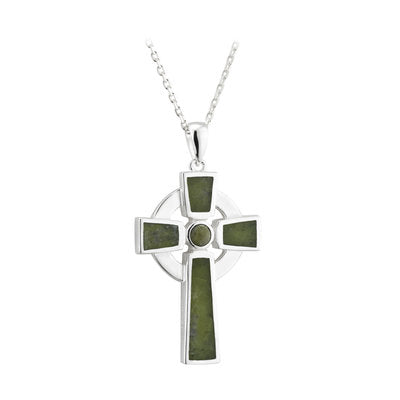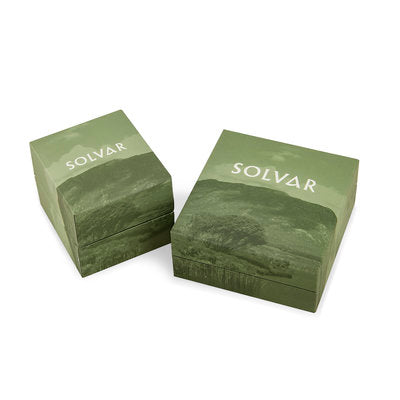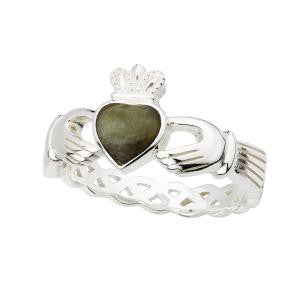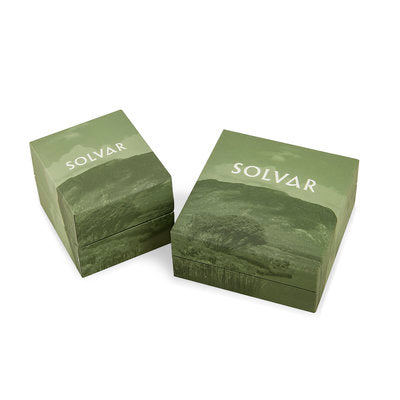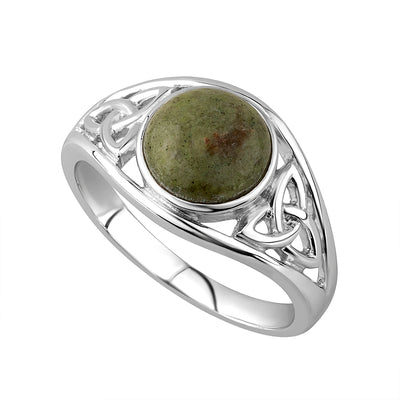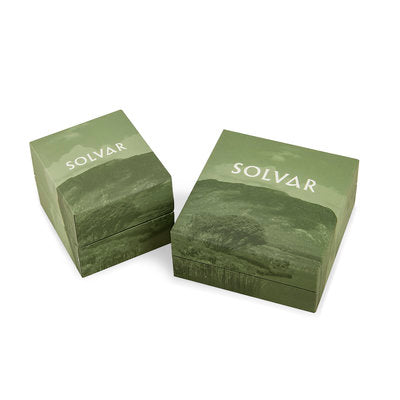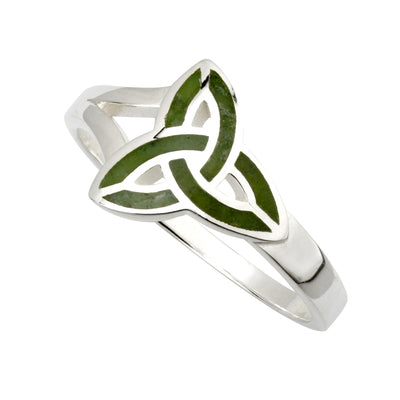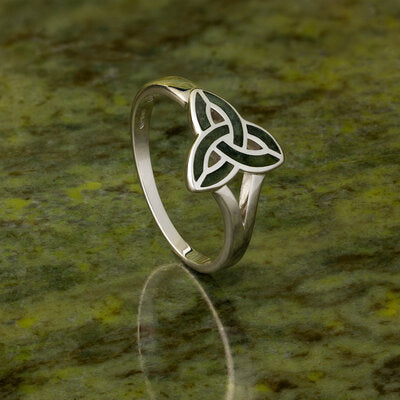When people think of Ireland, often the first things to come to mind are intangibles.
Ireland is, for a lot of people, a lot of the time, a feeling as much as a place. The feeling of welcome and warmth, which so many people experience and which keeps them coming back. “Céad mile fáilte” — or a hundred thousand welcomes — captures some of this feeling. The uniquely Irish capacity for “craic” is part of this feeling of welcome and warmth too. For so many visitors, even those without any real family background in the old country, the feeling of arriving in Ireland is a feeling of homecoming.
The other thing that often comes to mind when people think of Ireland is color. EL James made a fortune with fifty shades of gray, but if Ireland is a country of a hundred thousand welcomes, it is also a land of a hundred thousand shades of green. Indeed, so struck was the legendary country and western star Johnny Cash by Ireland’s unique range of color that he wrote a famous about “the Emerald of the Sea” after a trip to Ireland in 1961.
Anyone who goes to Ireland — and especially to Ireland’s countryside outside the urban centers — will understand Johnny Cash’s sentiment. Your eyes will be greeted by a vista of hues that have been known to create a deep and lasting emotional experience. It is the emerald isle, but you’ll find every other green there too: shamrock and basil, moss and sage, fern and pine and oakleaf. Limes are not native to Ireland, but you won’t have to travel too far to find some lime green.
So it is fitting, surely, that Connemara Marble, often labeled Ireland’s national gemstone, carries so many of these shades within its seams of rock. Beneath the lush green overland, Ireland’s color filters into its most precious stones too.
Steeped in history and cultural significance, Connemara Marble is found exclusively in the Connemara region of western Ireland. It has captivated people for centuries with its gorgeous color and intricate patterns. From ancient times to the present day, Connemara Marble has been a symbol of Ireland's natural beauty and craftsmanship.
 A close-up of Connemara Marble … image via James St John / Flickr Creative Commons
A close-up of Connemara Marble … image via James St John / Flickr Creative Commons
A (Very!) Brief History of Connemara
But before we get to the marble, we must first touch on the place that it comes from.
Located on the rugged Atlantic coast of County Galway in western Ireland, Connemara is a region renowned for breathtaking landscapes and deep cultural heritage … as well as being one of the key departure points for Irish people to the new world during the Great Famine of the 1840s, often on the so-called “Coffin Ships” where many would tragically perish on the perilous journey across the Atlantic.
Connemara includes Ireland’s largest Irish-speaking Gaeltacht areas, as well as two notable mountain ranges, the Maumturks and the Twelve Pins (or Twelve Bens). Connemara’s coastline, peninsulas, coves, islands, and lakes are some of the most cherished in all of Ireland.

Much of the Connemara Marble that finds its way around the world — from jewels and trinkets to a showpiece presence in outstanding architecture — comes from a quarry in a place called Lissoughter (pronounced Liss-ock-turr) that has been providing this gorgeous stone for 200 years.
The Rich History of Connemara Marble
The history of this rock and these stones dates back over 900 million years, making it one of the oldest and most revered gemstones in the world. The marble formed during the Precambrian era, the earliest period of the Earth’s history, when the first infinitesimal evidence of microbial life started to stir and all the world’s solid ground was together in a single supercontinent landmass — often called Pangaea, or Rodinia. What would in time come to be called “Connemara” would have looked a whole lot different back then!
During this time the planet’s crust was undergoing significant geological transformations, and the unique color of Connemara Marble is attributed to the presence of serpentine, a mineral that was given the name from the Latin word serpentinus. (The rock’s physical make-up and color reminded those early observers of a snake-like stone.) It was this mineral that infused the stone with its distinctive shades of green.
Historically, there is some evidence that Connemara Marble was used by the ancient Celts and early Christian communities in Ireland for various purposes, including the construction of sacred sites and religious artifacts.
The stone was believed to possess mystical properties — about which more below! — and its intricate patterns were thought to symbolize the interconnectedness of life and nature. (We’ve seen this before, right? Check out this article on Celtic knots and knotwork and their enduring symbolism of the oneness of all life.)
Over the centuries, Connemara Marble has been used in everything from church altars and monuments to decorative items and jewelry, and all of these use cases make it a timeless symbol of Ireland and Irishness.
The Origins and Characteristics of Connemara Marble
Connemara Marble is a metamorphic rock primarily composed of calcite, with unique veining and color variations ranging from light to dark green, often interspersed with veins of white, gray, and brown. These variations result from the different minerals present in the stone, meaning that each piece of Connemara Marble — from a pendant necklace to a lavish kitchen countertop — possesses its own unique appearance.
Quarried in County Galway's Connemara region, the extraction process involves careful and sustainable methods to preserve the natural beauty and integrity of the landscape. The raw marble blocks are transported to workshops where skilled artisans cut, polish, and shape the stone into various forms, taking ultimate care to preserve and showcase the stone’s natural thousand-million-year-old beauty.
Connemara Marble in Jewelry
Connemara Marble has long been favored by jewelry makers due to its unique aesthetic and cultural significance. The stone's rich green hues and intricate patterns make it ideal for creating stunning pieces of jewelry that embody the essence of Ireland.
The gemstones are used to craft a wide range of jewelry items, covering everything from traditional Celtic designs to more modern styles, including rings, necklaces, bracelets, and earrings.
The stone is often set in silver or gold, enhancing its beauty and adding a touch of elegance. Jewelry made from Connemara Marble not only serves as a beautiful accessory but also as a meaningful symbol of Irish heritage and craftsmanship.
The Mystical Healing Properties of Connemara Marble
This is Ireland, after all, so it should be no surprise that beneath the functional and the physical there should be some spiritual and metaphysical properties too.
Throughout history, Connemara Marble has been attributed with various healing properties and mystical qualities. In ancient times, it was believed to bring tranquility, serenity, and balance to those who possessed it.
Modern enthusiasts of crystals and crystal healing continue to consider Connemara Marble as possessing some unique qualities, such as promoting calmness, enhancing meditation, and fostering emotional healing.
There might be a shortage of cold scientific evidence to support these use cases, but science is an evolving study, and there’s no doubt that the natural beauty and historical significance of the stones — coupled with the increasingly digital and intangible reality of our day to day lives — gives Connemara Marble a depth of physical significance, whether you are seeking a connection to Ireland's mystical past or just like the feeling of holding something ancient between your fingers.
The Celts and the Legend of the "Luck Stone"
The Celts regarded Connemara Marble as a symbol of strength and resilience, using it in rituals and as a protective talisman
The term “Luck Stone” originates from the Gaelic or Irish phrase "An Cloc Cosanta," which translates to “The Protective Stone”.
This belief dates back to ancient Celtic traditions, where such stones were revered for their perceived mystical properties. The ancient Celts, known for their deep connection with nature and spirituality, often sought out stones with naturally occurring holes.
It is held that they believed the stones had the power to ward off evil spirits, therefore giving them a greater chance of safe passage and success in their endeavors. These stones, often referred to as “hag stones” or “holey stones”, were believed to hold powerful protective qualities — the holes were thought to allow negative energy to pass through without causing harm, thus acting as a barrier against malevolent forces. Additionally, these stones were seen as bringers of good fortune, enhancing the wearer's luck and favoring them with positive outcomes.
When preparing for battle or embarking on a hunt, Celtic warriors and hunters would carry these “Luck Stones”, either wearing them as amulets around their necks or fastening them to their gear and weapons. The practice of carrying Luck Stones highlights the Celts' profound respect for natural elements and their reliance on spiritual symbols for protection and guidance. This ancient Irish tradition only serves to further underscore the enduring cultural significance of Connemara Marble.
The Sourcing and Sustainability of Connemara Marble
As with any extractive process, there is always the question of impact on the natural environment. There is, though, a strong emphasis on sustainability and environmental responsibility within the Connemara Marble quarrying industry. Quarry operators in Connemara must abide by strict regulations and guidelines to minimize the impact on the surrounding landscape and related ecosystems. Sustainable practices include careful extraction methods, land restoration, and the use of eco-friendly technologies.
Efforts are also made to ensure that local communities benefit from quarrying activities. By providing employment opportunities and supporting local businesses, the Connemara Marble industry contributes to the economic wellbeing of a region that has long been one of Ireland’s most economically challenged. Connemara was, after all, one of the areas worst hit by the famine or “Great Hunger” of the 1840s, when a million Irish people died and a million more were forced to emigrate. The intergenerational trauma of that experience is still felt by many in the region, and any pursuit that might keep people in livelihoods within the locality must be respected.
Ethical sourcing of Connemara Marble ensures that this precious gemstone can be enjoyed by future generations while preserving the natural beauty of Connemara.
Famous Buildings Featuring Connemara Marble
Around the world Connemara Marble has long been a sought-after stone for prominent display in prominent buildings.
To cite just two examples, Connemara Marble can be found on the floor of the famous Galway Cathedral in Ireland, but it has also made its way across the wide Atlantic to take a prominent place in the stunning halls of the Pennsylvania State Capitol Complex building in Harrisburg.
 One of the most beautiful chambers in all the world. The Pennsylvania State Capitol Complex building in Harrisburg, where Connemara Marble was used in the walls and doors when the building was constructed in 1903. Photo via Wikimedia Commons
One of the most beautiful chambers in all the world. The Pennsylvania State Capitol Complex building in Harrisburg, where Connemara Marble was used in the walls and doors when the building was constructed in 1903. Photo via Wikimedia Commons
 Galway Cathedral, with its famous Connemara Marble floor. Photo via Daniel Mennerich / Flickr Creative Commons
Galway Cathedral, with its famous Connemara Marble floor. Photo via Daniel Mennerich / Flickr Creative CommonsCaring for Your Connemara Marble Pieces
Connemara Marble is durable, but like all natural materials, it does require some proper care and attention to maintain its beauty and longevity.
Here are a few tips for caring for your Connemara Marble jewelry and decorative items:
- Cleaning: Use a soft, damp cloth to gently clean your Connemara Marble pieces. Avoid the use of any harsh chemicals or abrasive materials, which could inflict some irreparable damage to the stone's surface.
- Polishing: To restore the shine, use a mild, non-abrasive polishing compound specifically designed for natural stones. Apply the polish with a soft cloth and buff gently.
- Storage: Store your Connemara Marble jewelry in a soft pouch or lined jewelry box to protect it from scratches and other damage. Keep decorative items in a cool, dry place away from direct sunlight to prevent discoloration.
- Handling: Handle your Connemara Marble pieces with care to avoid dropping or knocking them against hard surfaces, which could cause chips or cracks.
In conclusion
All told, Connemara Marble is more than just a beautiful stone.
A symbol of Ireland's rich geological history, from the country of a hundred thousand welcomes comes a gemstone dating back a thousand million years. (Yes, it would be easier to say “billion”, but it doesn’t sound as good, right!?)
Containing within its stone the deep hues of color from the land of all greens, Connemara Marble continues to captivate and inspire. Whether worn as jewelry or displayed as a decorative item, it is, forever and always, a timeless and cherished part of Ireland's natural legacy.

